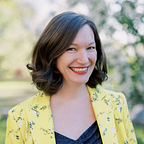Alumni advocates
I spent the weekend at Northwestern University for our annual Homecoming festivities. Since graduating, I have never missed a homecoming, and I have every intention to attend as many as possible in the years ahead.
One of the things that stands out to me so much about weekends like this is the sheer number of alumni who return year after year to campus. As of this year, I now sit on the board of directors for the alumni association of the university, and it’s been fascinating for me to observe the behavioral patterns of why people continue to engage.
There are many factors that drive alumni engagement, but the clearest way I’ve heard it described is that participation is equal parts from the head as from the heart.That is to say, there’s a rational reason and an emotional reason for showing up.
The rational side is easier to explain — Maybe you can expand your network, maybe you meet somebody who can get you a better job, maybe you learn a new skill or continue to advance your expertise in a particular area by engaging with that community. This is what drives the programming, events, and outreach for most of the university. In some ways, you can count your progress in this area by conventional measures: How many events did you attend, how many emails did you open, how many online courses did you take?
But this is only half of the puzzle.
The sticky part — the part that really gets people coming back year after year — is the part that comes from the heart. It’s the friends they met on campus, it’s the feeling of being back in a place that feels like home, it’s that hard-to-describe sense of community and acceptance and belonging. How can you measure how good it feels for someone to show up in a place that feels like home? How can you quantify the impact of the relationships you made as an undergraduate in your college dorm room? This is the trickiest part of all. It’s more about gut than about numbers. But the heart stuff is what drives passion and keeps people coming back for more.
Finding belonging in other communities
I think a lot about how to cultivate a similar sense of belonging within other communities, including the USV Network. Of course, it’s a very different model. One of the things that universities or any academic environment have going for them is a fixed period of time where you are all with the same cohort doing the same thing. Showing up on campus as a freshmen is a terrifying and highly emotional experience. The people you befriend over those four years have something that ties them all together by all going through this formative period together. All of this helps build camaraderie and belonging.
It’s harder to replicate that same “freshmen feeling” with people who join 75 startups all over the world at different times. That said, some tech communities have this down to a science. This cohort model is what makes the YC founder network so powerful. There’s also a highly emotional experience that all YC founders uniquely feel for each other that starts with their acceptance into a class and ends at Demo Day. By the end of those 12 weeks, you’re bonded through blood, sweat, and tears. In the end, you’re more than just an early stage founder with a killer pitch deck: You’re a survivor. That’s what makes it so natural to stay engaged in their alumni network and “give back” to the class that comes next.
While I’m sure there’s no equal comparison for the emotional toll of founding your own company, I do believe there’s a shared experience that startup employees feel across various stages. If you’ve ever joined a company when it was small and stuck around through 3x or 10x growth cycles, you know what I’m talking about. There’s a bit of a “badge of honor” you might wear from that experience, too. And that’s one of the things that we notice helps serve as connective tissue among people who work in our portfolio companies.
The peer-to-peer model in the way we organize events for the USV Network isn’t only designed to facilitate the spread of great ideas (though of course we hope that’s a given with any event we organize). Another goal with this model is to help you “find your people.” To share a moment among peers with similar jobs, all wearing unique startup battle scars. To foster connection and offer you a tiny moment of recognition as you think, “Wow. I’m not alone.” And while this may be the hardest thing to measure, it’s likely a very important ingredient in the glue that will keep people engaged at our companies today and hopefully one day paying it forward as alumni.
